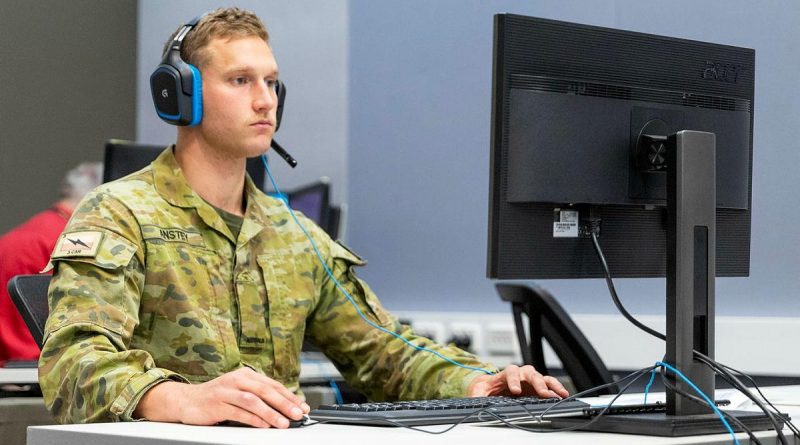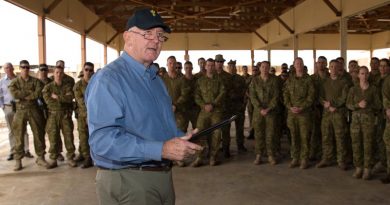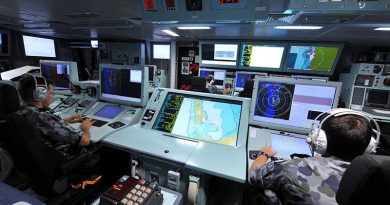Promotion course goes long distance

Army’s newest Royal Australian Electrical and Mechanical Engineers (RAEME) corporals were assessed in their promotion course in Townsville virtually by Army School of Logistics (ASLO) instructors more than 2000km away.
CAPTION: Craftsman Sheldon Anstey, from the 3rd Combat Signal Regiment, conducts his summative assessment for the Royal Australian Electrical and Mechanical Engineers Subject Two for Corporal Course. Photo by Sapper Jacob Chiplen.
The training exercise, involving Townsville’s 3rd Brigade and ASLO, highlighted the future possibilities of home-station training, which aims to bring training to the point of need.
Late last year, the 3rd Combat Signals Regiment (3CSR) ran the assessment for Subject 2 Corporal for RAEME course using desktop trainers at the battle simulation site in Townsville.
Traditionally, it has been conducted in a Victorian forest.
Sergeant Nitin Biswas was one of the ASLO instructors who joined the virtual exercise through the land simulation network to test the potential of assessing learners remotely.
“Every single soldier in RAEME, from corporal and beyond, would’ve completed this course sometime in their career,” Sergeant Biswas said.
The Subject 2 Corporal RAEME course assesses a learner’s ability to command a forward repair team and has historically been held in the Yackandandah State Forest, focusing on “verbal to and fro” with a single instructor.
“Last year, we transitioned to using PMTTs (protected mobility tactical trainers) in Puckapunyal and went from two vehicles to a proper four-vehicle convoy through the use of simulators,” Sergeant Biswas said.
“Learners are now immersed in a completely virtual environment, with both audio and visual cues.
“Instead of a quick-decision exercise being initiated by an instructor, learners are driving in PMTTs, which have scenarios that we created being run in virtual battlespace software, so they really have to pay attention to their surroundings.”
While the use of PMTTs improved training outcomes through a more lifelike experience, further training transformation was needed when border restrictions reduced the ability of instructors to assess students in Puckapunyal.
“We worked with 3CSR and the battle simulation site to adapt our virtual training scenario package. They used their simulators in Townsville, and we joined the scenario through the land simulation network as invisible observers,” Sergeant Biswas said.
“As instructors, we had our normal administration powers and could listen to the communications between vehicles and the forward repair team commander.”
Sergeant Biswas said the 3CSR team took the training exercise a step further by arranging practical activities outside the simulators.
This incorporated normal force-generation tasks, with the individual training creating mutually beneficial training outcomes.
“We are training our people to go out and do their job in challenging environments and this is the best way to train them without placing them in harm’s way,” Sergeant Biswas said.
“High-quality training is about looking after our people and providing them with the skills to do their job to the best of their ability.
“We’re looking at training that is future-proofing the system, not just keeping up.”
The Future Ready Training System program is currently piloting a number of home station training trials similar to this ASLO example, through mutually beneficial training to provide soldiers more time with their family, reduce travel, better equip bases and improve technology.
.
.

.
.





